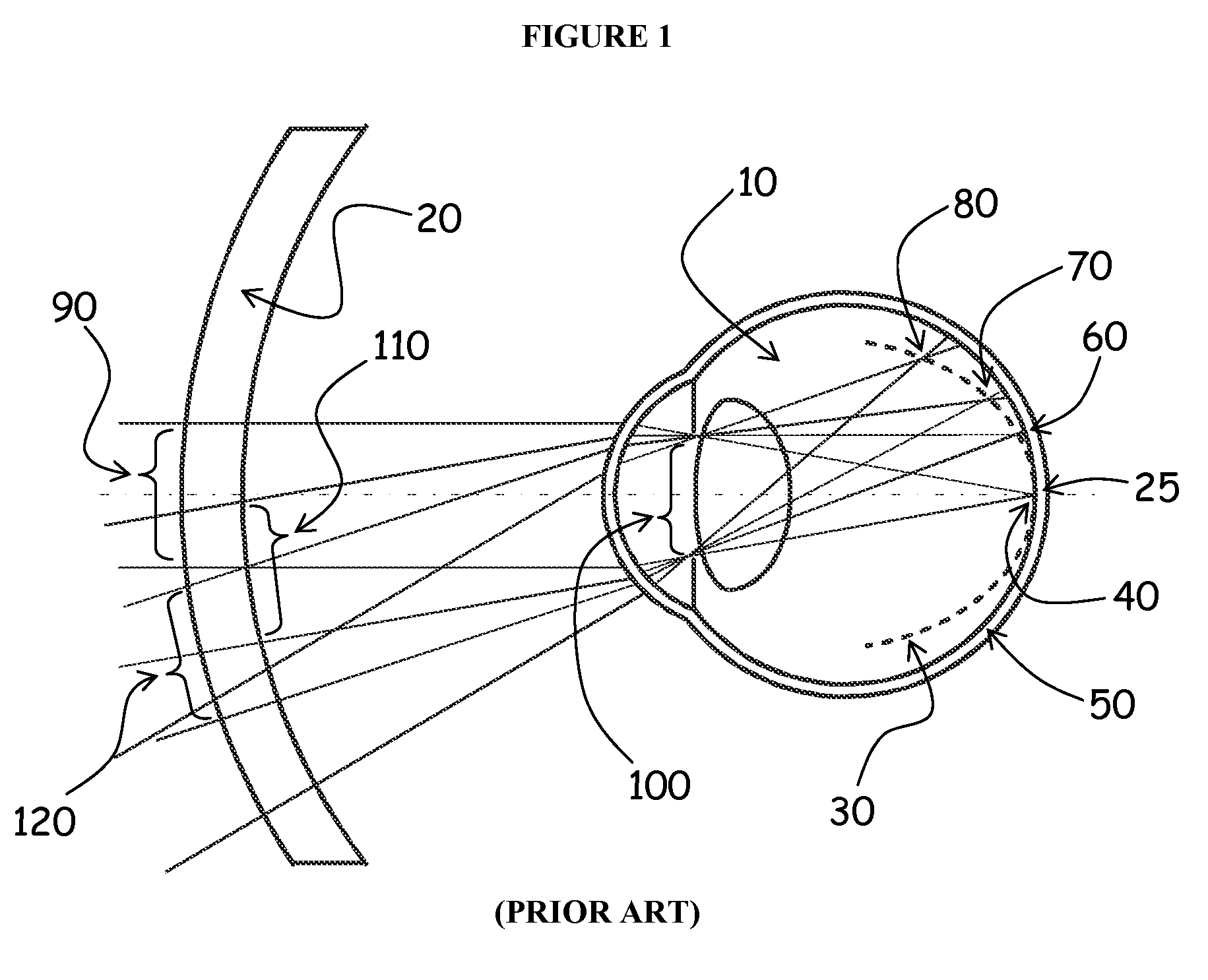Method and apparatus for controlling peripheral image position for reducing progression of myopia
a peripheral image position and control method technology, applied in the field of methods and systems for the treatment of can solve the problems of poor compliance of wearers to maintain this method of treatment, inability to achieve constant blurred vision, and poor central vision, so as to reduce or cease the progression of refractive error, good central vision, good effect of useful vision
- Summary
- Abstract
- Description
- Claims
- Application Information
AI Technical Summary
Benefits of technology
Problems solved by technology
Method used
Image
Examples
Embodiment Construction
[0069]For the wearers, such as those described in the previous sections, who require good central vision as well as certain select other directions of gaze, it would be beneficial and advantageous to provide a vision treatment device that can impart the refractive error-reducing stimulus through the appropriate manipulation of the position of the peripheral image points as taught by U.S. Pat. No. 7,025,460, but for which other optical aberrations are reduced for those select directions of gaze—i.e. for the vision priority zones. In addition, should the vision treatment devices be of the decenterable type, it would be beneficial and advantageous to not only control or reduce the other optical aberrations through the select directions of gaze but also to control or reduce defocus.
[0070]FIG. 1 explains the rationale pertaining to the control of other optical aberrations behind the current invention. In FIG. 1, an eye 10, with myopic tendencies (i.e. is either myopic or would develop my...
PUM
 Login to View More
Login to View More Abstract
Description
Claims
Application Information
 Login to View More
Login to View More - R&D
- Intellectual Property
- Life Sciences
- Materials
- Tech Scout
- Unparalleled Data Quality
- Higher Quality Content
- 60% Fewer Hallucinations
Browse by: Latest US Patents, China's latest patents, Technical Efficacy Thesaurus, Application Domain, Technology Topic, Popular Technical Reports.
© 2025 PatSnap. All rights reserved.Legal|Privacy policy|Modern Slavery Act Transparency Statement|Sitemap|About US| Contact US: help@patsnap.com



